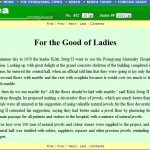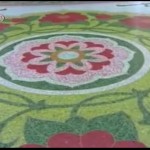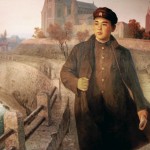According to the New York Times:
But on Sunday, The Associated Press reported, North Korean television audiences were given a rare break from this routine when the British comedy “Bend It Like Beckham” was shown there. The film, which stars Parminder Nagra as a young woman from a Sikh family with dreams of soccer stardom; Keira Knightley as her best friend; and Jonathan Rhys Meyers as the dreamy coach they both have eyes on, was shown over the weekend by the arrangement of the British Embassy. According to the BBC, a message was shown during the film saying that the broadcast was done to mark the 10th anniversary of diplomatic ties between North Korea and Britain.
In a message on his Twitter account, Martin Uden, the British ambassador to South Korea, wrote: “Happy Christmas in Pyongyang. On 26/12 Bend it like Beckham was 1st ever western-made film to air on TV.” The A.P. said the North Korean broadcast of the two-hour movie was only an hour long, so please, no spoilers about the film’s subplots about religion and sexuality, or which of the women Mr. Rhys Meyer’s character ultimately chooses.
UPDATE from a Koryo Tours newsletter:
In 2004 Koryo Tours together with Ealing Studios and the British Embassy screened the film Bend it Like Beckham at the Pyongyang International Film Festival, it was seen by over 12,000 Pyongyang citizens and was the film they raved about…during the festival we were inudndated with requests for tickets from the Yanggakdo hotel staff. During the film the coach tells the heroine of the film to make a decision about her life…and this was translated as her following the Juche way!
In 2009 Koryo Tours was asked by the British Embassy in Pyongyang to assist with ideas for marking 10 years of diplomatic relations- and football was what we came up with. In October 2010 we took Middlesbrough Women’s football team to play two local Korean sides (to a total of 14,000 fans and nationwide tv broadcast) and on Boxing Day the film Bend It Like Beckham was broadcast in Pyongyang- and that is a massive ‘first’ with everyone in Pyongyang talking about it!
Our colleague Hannah Barraclough is working on bringing over the April 25th women’s team in 2012 to play in Europe. If you want any details or have any ideas on how to help with this project please let us know.
Here is a link to the ambassador’s Twitter feed.
To be honest, I am not sure about the claim that it is the first western-made film shown on DPRK TV. I know that the Bonner/Gordon film The Game of Their Lives was shown unedited on DPRK television, though it is about the DPRK and they were involved in the filming. Tom & Jerry is on DPRK TV to this day, though it is not a film. Titanic was shown in DPRK cinemas. Any other examples?
Read the full story here:
North Korea Gets a Special Kick Out of ‘Bend It Like Beckham’
New York Times
Dave Itzkoff
12/20/2010



